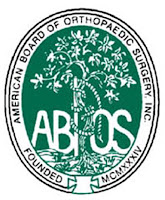BONES and
WORMS
A WRITER ON
PARSITES INVENTS “ORTHOPEDICS”
It is ironic that the term “orthopedics”
denotes a surgical specialty, considering that the inventor of that word,
Nicolas Andry, was a fervid enemy of surgeons. Andry was born in Lyon in 1658.
He studied for the priesthood, left that path to teach humanities, then decided rather late on medicine and studied at the University
of Reims and the University of Paris, obtaining his degree at age 39. His thesis was
“The relationship in the management of diseases between the happiness of the
doctor and the obedience of the patient”, a subject not unusual at the time (and relevant today!). He
rose to become a professor at the College de France and finally, in 1724, dean
of the faculty.
 |
| Nicolas Andry de Boisregard (courtesy Wellcome Library and Wikipedia) |
He wrote two
important books. The first appeared at the start of his career, at age 42: An Account of the Breeding of Worms in the
Human Body, a book that earned him the name “father of parasitology”.
Though it is an early work on parasites, with several illustrations (some of
them fanciful), its real importance lies in Andry’s strong stand against
spontaneous generation. Belief in spontaneous generation of intestinal worms
went back to Hippocrates and continued through Galen and Avicenna. But
Leeuwenhoek’s
microscope and Redi’s experiments with flies in the late 1600s
shed doubt on that notion. Andry never experimented; he simply stated, “Worms
breed in the bodies of men and other animals, by means of a seed that enters
there, in which those worms are enclosed. For all animals are bred of a seed
which contains them…” (Grove). He describes a patient with fever, chest pain,
and coughing blood who, after a purgative, expelled a long tapeworm, complete
with head. Andry was the first to
illustrate the tapeworm head (see illustration), though they had been described previously.
 |
| Tapeworm, from "An Account of Breeding..." (from Haiti Trust) |
At the other end of his career, at age 82, he
published Orthopaedia or the Art of
Correcting and Preventing Deformities in Children (English translation). This
book earned him the title “father of orthopedics”, and though that is a little off the mark, the author introduced the word “orthopedics” by saying “As to the
title, I have formed it of two Greek words, viz. orthos, which signifies straight, free from deformity, and paidos, a child. Out of these two words
I have compounded that of Orthopaedia.”
The word persisted and infiltrated many languages.
The book was actually
a manual for the use of parents to treat or prevent, in their children, deformities of the skeleton and in part 2, those of the head. Various massages and braces are recommended
for crooked spines and limbs, and exercises, proper posture, etc., for
prevention of deformities. The section on the head covers skin problems,
smallpox, deafness, nasal deformities, and the like. Overall, measures are conservative.
One remedy is of
particular interest. If a child is becoming bow-legged (usually from rickets at
that time) Andry advises placing an iron plate on the
inner side of the leg and
binding it with a linen bandage, tighter each day "as is used for making straight the crooked trunk of a young tree” (see illustration). The famous tree image has been adopted by orthopedic
associations around the world. The logo of the American Board of Orthopedic Surgery is
one example:
 |
| Straightening the tree trunk, in Orthopaedia (from Hathi Trust) |
 |
| Logo, Amer Board of Orthopedic Surgery |
An interesting variation was created by the Arizona Orthopedic Society - a curved cactus:
 |
| Logo, Arizona Orthopedic Society |
Andry was described
by colleagues as irascible, scornful, jealous, and superb. As a critic for the Journal des Savants he carried on a
prolonged campaign against barber surgeons, abolishing surgical positions at
the school and requiring that surgeons operate with a medical doctor present.
Ironically,
he unjustly targeted Jean-Louis Petit, a famous surgeon who invented the
screw tourniquet, was the first to drain the mastoid bone, and wrote a highly
regarded work on bone surgery, the first comprehensive orthopedic surgery text.
 |
| Jean-Louis Petit (from Wikipedia) |
Sources
consulted:
Grove, D I. A History
of Human Helminthology. 1990.
“Eulogy of Jean-Louis Petit”. Chirurgie 126: 475-81, 2001
“A History of the Ecological
Sciences, Part 30”. Bull Ecol Soc
America,
Oct 2008, pp 407-433.
“Nicolas Andry de Bois-Regard,
the Inventor of the Word
Orthopedics and the Father of Parasitology”. J Child Orthop
4:
349-55, 2010.
Kirkup, J R. “Nicolas Andry and
250 years of Orthopaedy”. J
Bone
Joint Surg (Br) 1991. 73-B: 361-2.
Andry, N. De la Generation des Vers dans le Corps de
l”Homme. 1700.
Andry, N. Orthopaedia: or the Art of Correcting and Preventing
Deformities in Children. 1741 (Eng trans 1743).
(to leave a comment click on
"no comments" and a box will come up)
(to subscribe enter email address or send request to gfrierson@gmail.com)

No comments:
Post a Comment
Comments are welcome. Especially new knowledge, insights, and sources of further information.